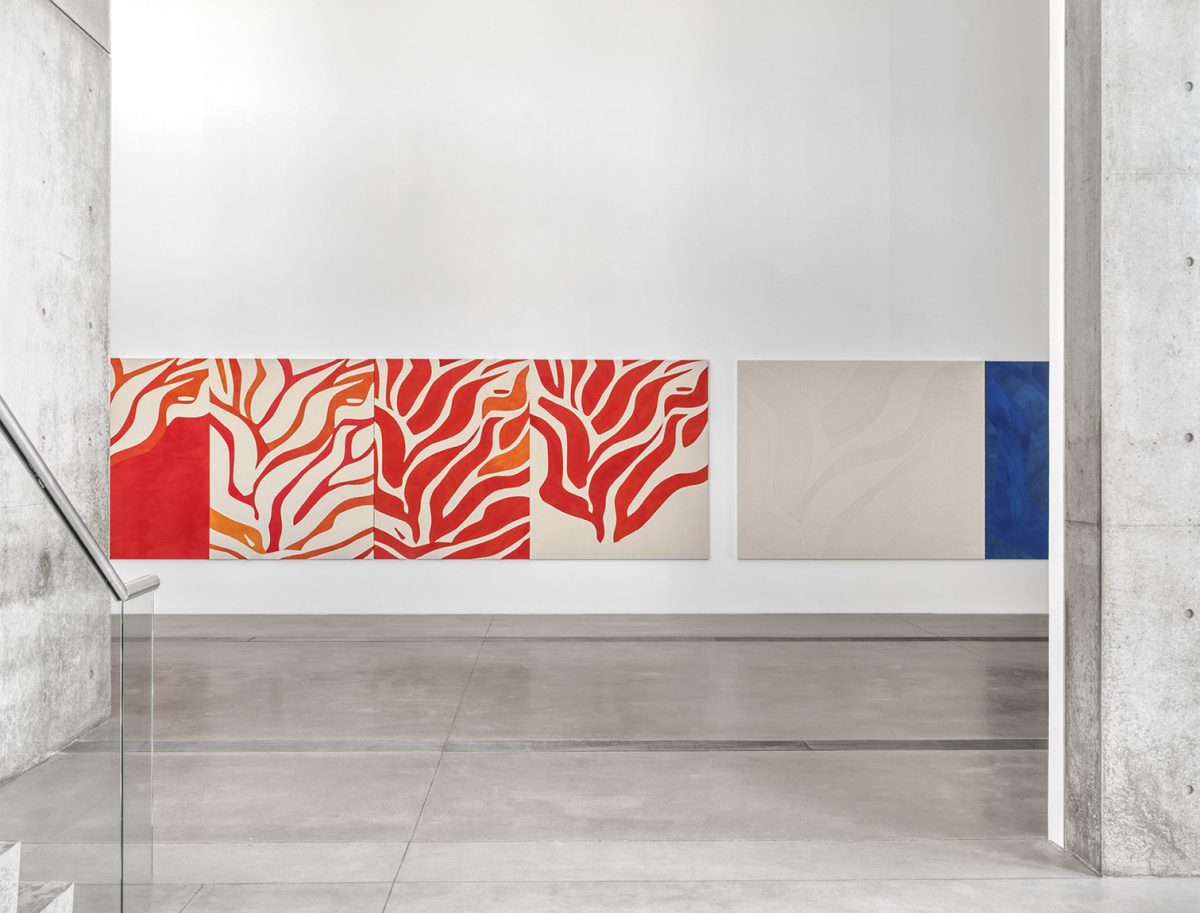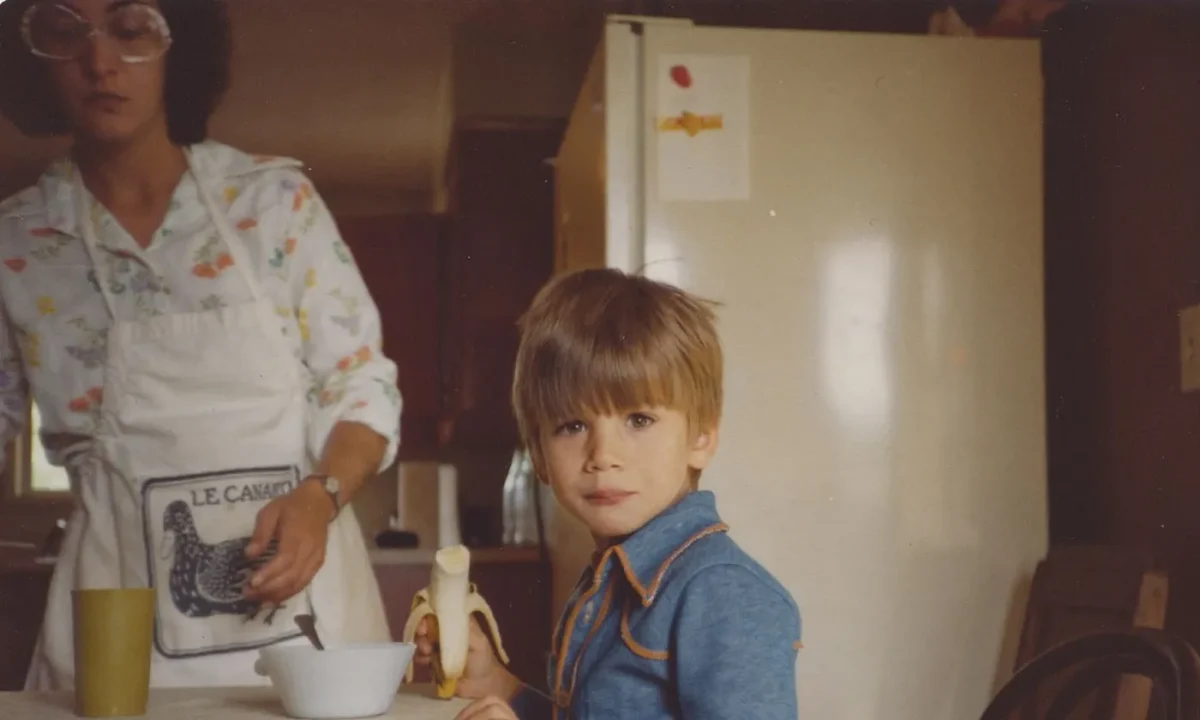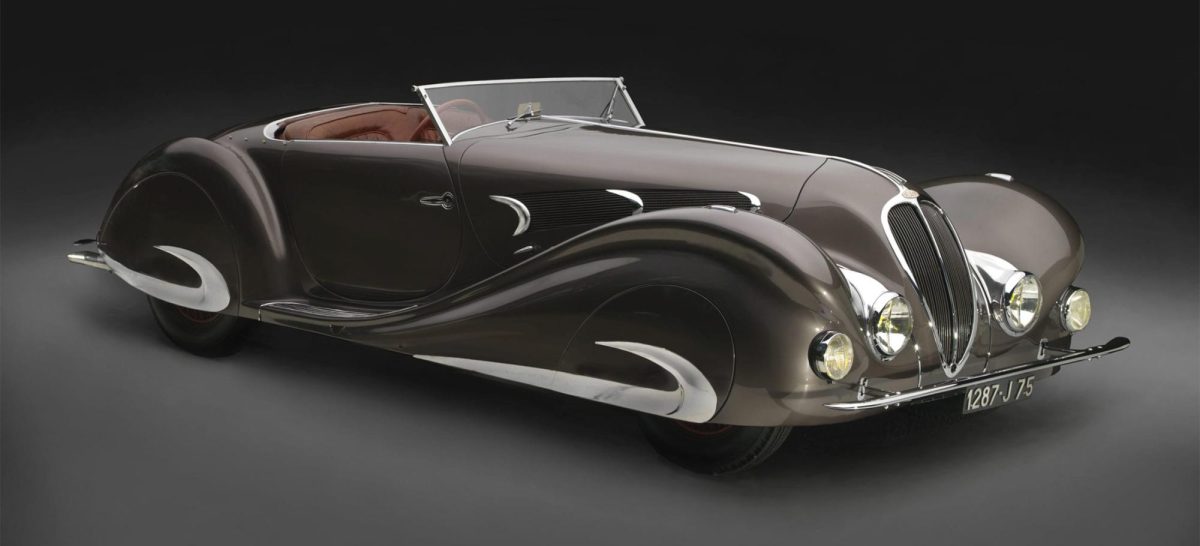On Sept. 8, the Pulitzer Arts Foundation celebrated the opening of two fall exhibitions, “Sarah Crowner: Around Orange,” curated by Stephanie Weissberg, curator at the Pulitzer, and “Urban Archeology: Lost Buildings of St. Louis,” curated by Michael R. Allen, director of the National Building Arts Center, and Weissberg. Situated in the historical Grand Center Arts District, the Pulitzer Arts Foundation’s fall exhibitions respond to and interact with the character of St. Louis’ built environment, steeped in a history of social and architectural narratives.
Sarah Crowner, a visual artist based in New York City, created three new site-specific pieces for “Around Orange.” The pieces reflect Crowner’s diverse practice, including paintings, a platform installation and a mural. Crowner responds to Pulitzer’s Tadao Ando-designed modernist building by engaging with its use of natural light and Crowner’s longtime inspiration, Ellsworth Kelly.
Crowner’s first piece, a glazed terracotta mural, hangs in the courtyard entrance of the building. Upon entering, viewers are invited to experience Crowner’s second piece–a birch wood platform that rests below two of Kelly’s early works. Crowner’s platform takes inspiration from the rounded form of “White Plaque: Bridge Art and Reflection,” bringing viewers onto the platform to immerse themselves into Kelly’s pieces.
“[Crowner is] very much thinking about how when you stand on a platform versus on the floor, how does it affect your perception of space? Said Curatorial Assistant Molly Moog. “[Crowner] is also really interested in architecture, and how people move through and perceive architecture or spaces with their bodies,” said Moog.
Crowner’s platform changes how viewers experience the gallery, asking them to move in a new way, much like how Ando’s horizontal and long open spaces with uninterrupted sightlines call viewers to move through the space. The platform curves around the entryway of the building, an otherwise rectilinear area. Visitors can imagine how the platform, if not constricted by the building’s walls, would continue through space. By presenting art as a dynamic force in the gallery, Crowner inspires viewers to reflect on and reimagine their surroundings.
On the east wall of the main gallery hangs Crowner’s largest commission for the exhibition. The seventy-five-foot painting, with the same height as “Blue Black”’s 6-foot width, was designed with the horizontal character of Ando’s building in mind. Crowner’s patchwork of repeated shapes in saturated colors evoke minimalist and hard-edge qualities, reminiscent of Kelly’s “Blue Black” which hangs on the wall to the right of Crowner’s. As they exit the main gallery, visitors are guided from a contemporary world of abstract art into the architectural heritage of St. Louis.
The Pulitzer’s second exhibition, “Urban Archeology: Lost Buildings of St. Louis” features a variety of salvaged architectural artifacts from the National Buildings Arts Center in Sauget, Illinois. “The National Building Arts Center was founded in the 1970s by a person named Larry Giles who started salvaging and taking pieces from buildings before they would be demolished. It is the largest collection of building artifacts in the country,” said Moog.
The exhibition’s diversity in pieces emphasizes the interplay between the built environment and narratives embedded within it. “I think one interesting thing about the show is that some of the buildings bring up more social histories, others more technical and artistic histories,” said Moog. The exhibition showcases a wide range of works, from bricks that tell stories about material innovation to lion heads emblematic of wealth.
The Cube Gallery displays pieces of the façade of the Rivoli Theatre, which stood in the Central Business District of Downtown St. Louis, before its demolition. The hand painted ‘Rivoli’ sign, sitting atop display pedestals, was dismantled from ornamental panels seated to the side in their original crate, a deliberate choice. “It’s a nod towards the way this object lives when it’s not in a building like this, and tries to get people to think about when you see an object like this in a museum, where does it come from? And, what is it like to experience something out of context?” said Moog.
In the 19th century, St. Louis became one of the largest brick and terracotta manufacturing areas in the world. The Fox Theatre, down the block from the Pulitzer, is one of many historic buildings that still showcases the craftsmanship of terracotta bricks. The exhibition’s collection of decorative, paver, and fire bricks showcase the history of brick production in St. Louis.
The east and west galleries display panel reliefs, pendants, and prominent neighborhood artifacts. Between the two galleries, an interactive space offers a sizable map of the surrounding area as well as note cards sparking reflection. “People can leave their personal associations with buildings and then mark them on the map,” said Moog.
“Sarah Crowner: Around Orange” and “Urban Archeology: Lost Buildings of St. Louis” will be on view through Feb 4, 2024 at the Pulitzer Arts Foundation.









